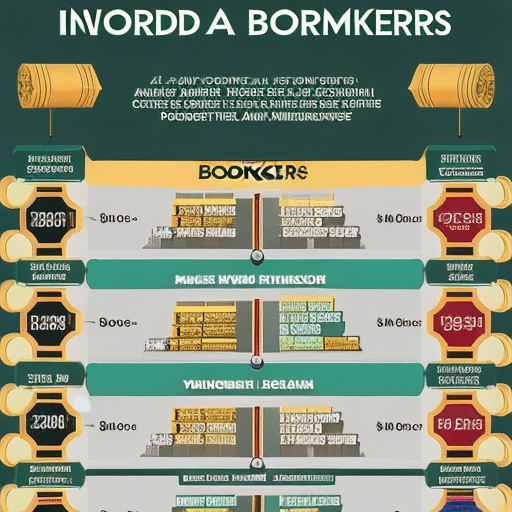Understanding Cryptocurrency Prices: Market Dynamics Explained
Navigating the world of cryptocurrency can feel like stepping into a whirlwind of numbers and trends. The price of cryptocurrencies fluctuates wildly, driven by factors ranging from market demand to regulatory news. Understanding these dynamics is crucial if you’re looking to invest or simply stay informed.
You might wonder why Bitcoin’s value skyrockets one day and plummets the next, or how emerging altcoins gain traction. By delving into the forces that influence cryptocurrency prices, you can make more informed decisions and better anticipate market movements. Let’s explore what drives these digital currencies and how you can stay ahead in this volatile landscape.
Key Takeaways
- Market Demand and Supply: Cryptocurrency prices are significantly influenced by market demand and supply limitations. Increased demand or limited supply often leads to higher prices.
- Regulatory Impact: Government regulations and legal news play a crucial role in the volatility of cryptocurrency prices, with positive news boosting prices and negative news causing declines.
- Blockchain Technology: Innovations and advancements in blockchain technology, such as Ethereum’s smart contracts, can enhance a cryptocurrency’s value and market appeal.
- Investor Sentiment: The emotions and perceptions of investors, often driven by social media trends and influential personalities, can lead to short-term price fluctuations.
- Tracking Tools: Utilizing tools like CoinMarketCap, CoinGecko, and mobile apps like Blockfolio and Coinbase is essential for monitoring real-time cryptocurrency prices and making informed investment decisions.
- Investment Strategies: Effective risk management and understanding long-term versus short-term investment strategies are key to navigating the cryptocurrency market and optimizing returns.
Understanding Cryptocurrency Prices
Cryptocurrency prices fluctuate due to various factors. You need to grasp these factors to navigate the volatile market successfully.
Market Demand
Market demand heavily influences cryptocurrency prices. When demand for a specific cryptocurrency, such as Bitcoin or Ethereum, rises, the price increases. Conversely, when demand drops, the price declines. Market demand often reacts to news, technological advancements, and macroeconomic trends. For instance, increased adoption of Bitcoin by major companies can trigger a price surge.
Supply Limitations
Cryptocurrencies like Bitcoin have a capped supply, meaning only a limited number of coins will ever exist. This supply limitation can drive prices upward as scarcity increases. For example, Bitcoin’s total supply is capped at 21 million coins. As more people buy Bitcoin, the reduced availability can lead to higher prices.
Blockchain Technology and Use Cases
The underlying blockchain technology and its potential use cases impact cryptocurrency prices. When a cryptocurrency introduces innovative features or secures significant partnerships, its value may increase. For example, Ethereum’s smart contracts have broad implications for various industries, bolstering its market value.
Regulatory News
Government regulations and legal decisions can significantly affect cryptocurrency prices. Positive regulatory news can boost prices, while negative news can cause sharp declines. For example, a country announcing stringent regulations on cryptocurrency trading can lead to mass sell-offs, plummeting prices.
Investor Sentiment
Investor sentiment often drives short-term price movements. When investors feel optimistic, prices tend to rise. On the other hand, fear or uncertainty can lead to rapid price drops. Social media trends, influential personalities, and market predictions play significant roles in shaping investor sentiment.
Comparing Cryptocurrencies
To understand price variations, you should compare different cryptocurrencies. For instance, token prices like SHIB on CoinMarketCap or Wif on CoinMarketCap reflect distinct technologies and market positions, affecting their valuation differently. Websites like CoinGecko provide comprehensive data on various coins, helping you make informed decisions.
Conversion Rates
Understanding conversion rates is crucial when dealing with cryptocurrencies. For instance, knowing the conversion of 4500 PHP to USD or 18,000 won to USD helps you understand the real-world value of your investments. Similarly, converting smaller amounts like 13,000 pennies to dollars or £10 in US dollars offers insights into your portfolio’s worth.
Tools and Resources
Utilize tools like CoinMarketCap and CoinGecko for up-to-date price information. These platforms offer in-depth analysis, historical data, and market trends, helping you stay informed. Monitoring XRP updates or platforms discussing general topics like the precio de criptomonedas ensures you are aware of crucial changes that might impact your investments.
Cryptocurrency prices are complex and influenced by various elements. Gaining a thorough understanding of these factors can assist you in navigating this volatile market effectively.
Factors Influencing Cryptocurrency Prices

Understanding the factors influencing cryptocurrency prices can help you navigate the volatile market more effectively. These factors directly impact how cryptocurrencies perform and fluctuate.
Supply and Demand
Supply and demand are fundamental economic principles determining cryptocurrency prices. A limited supply of a particular cryptocurrency usually results in higher prices, as its scarcity increases its value. Bitcoin, for example, has a cap of 21 million coins, contributing to its high demand and price. Conversely, an oversupply without matching demand can reduce a cryptocurrency’s value.
Market Sentiment
Market sentiment greatly influences cryptocurrency prices. When positive news surrounds a cryptocurrency, its price often increases due to higher investor confidence. Conversely, negative news can lead to price drops. Monitoring social media trends, news outlets, and influential figures’ opinions can provide insights into the current market sentiment. For example, a tweet from a prominent figure like Elon Musk can cause significant price movements.
Regulatory News
Regulatory news plays a critical role in cryptocurrency market dynamics. Governments and regulatory bodies around the world regularly release new policies affecting cryptocurrency legality and market operation. Favorable regulatory news, such as legitimization or relaxed restrictions, can drive prices up. On the other hand, stringent regulations or outright bans can decrease market prices. Staying informed about global regulatory developments is essential for making well-timed investment decisions.
Technological Developments
Technological advancements significantly impact cryptocurrency prices. Innovations within the blockchain technology that improve scalability, transaction speed, or security can make a cryptocurrency more attractive, boosting its price. Examples include Ethereum’s upgrade to Ethereum 2.0, which aims to improve scalability and security, thereby making it more valuable to investors. Technological setbacks or vulnerabilities, however, can negatively impact prices as confidence in the cryptocurrency’s future may wane.
These factors—supply and demand, market sentiment, regulatory news, and technological developments—provide a comprehensive view of the primary forces driving cryptocurrency prices. Understanding these can improve your ability to make informed decisions in cryptocurrency trading.
Popular Cryptocurrencies and Their Prices
Popular cryptocurrencies exhibit different price movements due to unique factors affecting each one. Understanding key cryptocurrencies helps in cryptocurrency trading for beginners.
Bitcoin
Bitcoin (BTC) is widely recognized and has the highest market capitalization. As of October 2025, the price hovers around $50,000 per BTC. Bitcoin’s price is highly influenced by market sentiment, regulatory news, and overall adoption rate. Major exchanges like Binance and Coinbase list Bitcoin, and it remains the standard for comparing other cryptocurrencies.
Ethereum
Ethereum (ETH) powers the popular blockchain known for smart contracts. Its price is approximately $4,000 per ETH as of October 2025. Factors such as technological advancements in the Ethereum network, like the Ethereum 2.0 upgrade, fuel its price fluctuations. Ethereum’s utility in decentralized finance (DeFi) and non-fungible tokens (NFTs) also boosts its value and trading volumes on platforms like CoinGecko.
Litecoin
Litecoin (LTC), often considered the silver to Bitcoin’s gold, trades around $200 per LTC. Its faster transaction times and lower fees make it an attractive option for smaller transactions. Litecoin’s price dynamics are influenced by overall market trends and its adoption in various payment systems. Monitoring updates from major exchanges, including CoinMarketCap, provides valuable insights into its price movements.
Ripple
Ripple (XRP) facilitates fast, low-cost international payments. Trading at approximately $1.10 per XRP, Ripple’s value is heavily impacted by legal proceedings, notably its ongoing lawsuit with the US Securities and Exchange Commission (SEC). Despite regulatory challenges, Ripple’s partnerships with financial institutions globally support its position in the cryptocurrency market. Frequent XRP updates on platforms like CoinMarketCap are crucial for understanding its market behavior.
Tools for Tracking Cryptocurrency Prices
Monitoring cryptocurrency prices can be simplified using various tools available online. These tools offer different features, from real-time updates to in-depth analysis.
Websites
You can use websites like CoinMarketCap and CoinGecko for comprehensive data. CoinMarketCap tracks the prices of various cryptocurrencies, showing market cap, volume, and ranking for over 11,000 coins, including Shiba Inu and JasmyCoin. CoinGecko also provides detailed analysis, focusing on metrics like developer activity, community size, and liquidity. These platforms enable you to compare currencies, helping in cryptocurrency trading for beginners.
Mobile Apps
Mobile apps like Blockfolio and Coinbase offer price tracking on the go. Blockfolio allows portfolio management, showing real-time values for investments. Coinbase provides market updates and price alerts for popular cryptocurrencies like Bitcoin and Ethereum. Both apps support multiple currencies and USD conversions, making it easier to track assets such as 5000 kroner to USD and 18000 won to USD.
Real-Time Alerts
Using real-time alert tools helps you stay updated on market changes. Apps like Crypto Pro and Coin Stats offer customizable notifications. You can set alerts for price thresholds, market cap changes, and significant updates like XRP news. These tools help in making timely investment decisions and staying informed about the latest market developments.
Investing in Cryptocurrencies
Investing in cryptocurrencies requires understanding the market dynamics and making informed decisions. Here, we’ll explore key investment strategies focusing on risk management and distinguishing between long-term and short-term investments.
Risk Management
Effective risk management is crucial when investing in cryptocurrencies due to their high volatility. Diversify your portfolio by investing in different types of cryptocurrencies like Bitcoin, Ethereum, and Ripple. This strategy reduces dependency on a single asset and mitigates potential losses.
Set stop-loss orders to limit losses during significant price drops. For instance, if you buy Bitcoin at $50,000, a stop-loss order at $45,000 ensures you sell automatically if the price falls, minimizing your losses.
Allocate a fixed percentage of your investment capital to cryptocurrencies. If you invest $10,000 in total assets, consider not exceeding 10%-20% in cryptocurrencies to avoid overexposure.
Long-Term vs Short-Term Investment
Deciding between long-term and short-term investment strategies depends on your financial goals and risk tolerance.
Long-Term Investment: This strategy, known as “HODLing” in cryptocurrency jargon, involves holding assets like Bitcoin or Ethereum for several years. It suits investors who believe in the long-term potential of blockchain technology and are less concerned about short-term price swings. Historically, Bitcoin has provided substantial returns over 5 to 10 years, despite numerous market fluctuations.
Short-Term Investment: Day trading or short-term investing aims for quick gains from market volatility. Traders often exploit price movements within hours or days, requiring close market monitoring and technical analysis skills. For instance, trading altcoins like Litecoin or Ripple can offer rapid gains, but the risks of significant losses are higher.
Combining both strategies—allocating a portion for long-term holding and another for short-term trading—can balance potential high returns with controlled risk.
Conclusion
Navigating the cryptocurrency market requires a deep understanding of various influencing factors and effective investment strategies. By leveraging tools like CoinMarketCap and Coinbase, you can stay informed and make strategic decisions. Balancing long-term and short-term approaches, while managing risk through diversification and stop-loss orders, can help you optimize returns. Stay vigilant and adaptable in this ever-evolving market to achieve your investment goals.
Frequently Asked Questions
What factors influence cryptocurrency prices?
Cryptocurrency prices are influenced by supply and demand, market sentiment, regulations, and advancements in blockchain technology. These factors create volatility, making it essential for investors to stay informed.
Which are the popular cryptocurrencies to invest in?
Popular cryptocurrencies include Bitcoin, Ethereum, Litecoin, and Ripple. Each has unique features and price determinants that are analyzed in the article.
What tools can I use to track cryptocurrency prices?
You can use tools like CoinMarketCap, CoinGecko, Blockfolio, and Coinbase for tracking cryptocurrency prices and making informed investment decisions.
How important is risk management in cryptocurrency investments?
Risk management is crucial in cryptocurrency investments. Strategies like diversification, setting stop-loss orders, and allocating only a percentage of your investment capital to cryptocurrencies can help manage risk effectively.
What is the difference between long-term “HODLing” and short-term trading?
Long-term “HODLing” involves holding cryptocurrencies for an extended period to weather price volatility, while short-term trading focuses on capitalizing on price fluctuations. A balanced strategy combining both can optimize returns with controlled risk.
How can market sentiment impact cryptocurrency investments?
Market sentiment impacts cryptocurrency investments significantly. Positive news can drive prices up, while negative news can lead to sharp declines. Staying updated on market news is vital for making informed decisions.
Why is diversification important in cryptocurrency investments?
Diversification spreads risk across different assets, reducing the impact of poor performance by any single investment. This strategy helps in managing volatility in the highly unpredictable cryptocurrency market.
What are stop-loss orders, and how do they work?
Stop-loss orders are preset levels at which an asset is automatically sold to limit losses. They help investors manage risk by ensuring that they do not lose more than they are willing to in volatile markets.
Are there any recommended strategies for new cryptocurrency investors?
New investors should consider a balanced strategy that includes both long-term holding and short-term trading. Diversification and risk management practices, like setting stop-loss orders, are also recommended for minimizing risks.





 Bitcoin
Bitcoin  Ethereum
Ethereum  Tether
Tether  XRP
XRP  USDC
USDC  Solana
Solana  TRON
TRON  Lido Staked Ether
Lido Staked Ether  Dogecoin
Dogecoin  Figure Heloc
Figure Heloc  Cardano
Cardano  WhiteBIT Coin
WhiteBIT Coin  Wrapped stETH
Wrapped stETH  Bitcoin Cash
Bitcoin Cash  Wrapped Bitcoin
Wrapped Bitcoin  USDS
USDS  Wrapped eETH
Wrapped eETH  Binance Bridged USDT (BNB Smart Chain)
Binance Bridged USDT (BNB Smart Chain)  Chainlink
Chainlink  Monero
Monero  WETH
WETH  LEO Token
LEO Token  Zcash
Zcash  Stellar
Stellar  Hyperliquid
Hyperliquid  Coinbase Wrapped BTC
Coinbase Wrapped BTC  Ethena USDe
Ethena USDe  Litecoin
Litecoin  Sui
Sui  Avalanche
Avalanche  Hedera
Hedera  sUSDS
sUSDS  USDT0
USDT0  Shiba Inu
Shiba Inu  Dai
Dai  Uniswap
Uniswap  PayPal USD
PayPal USD  Mantle
Mantle  Cronos
Cronos  World Liberty Financial
World Liberty Financial  Toncoin
Toncoin  Ethena Staked USDe
Ethena Staked USDe  Canton
Canton  Polkadot
Polkadot  USD1
USD1  Rain
Rain  Aave
Aave  MemeCore
MemeCore